by Lisa Cooke | Sep 5, 2015 | 01 What's New, Ancestry
When you invest your money in a genealogy website, you want to ensure that you’re getting the most value possible. Here we share tips for getting the most out of Ancestry.com.
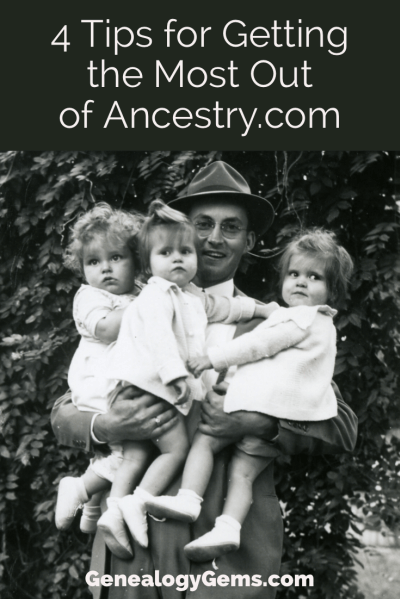
I noticed recently that Ancestry subscribers’ attitudes run the same gamut as attitudes of big-box retailer shoppers. Some people {heart} them unabashedly: they’ll spend hours strolling the aisles and share every great find on social media. Others dash in and grab just the items they can’t live without.
Whatever your stance toward the site, Ancestry is still the big-box retailer most genealogists need at some point. Take your cue from top big-box store shopping strategies for getting the most out of Ancestry.com:
1. Grab first what you can’t get anywhere else.
Learn what exactly you want from Ancestry versus other sites, the same way you’ve learned whose house brand of spaghetti sauce you like and who carries your favorite protein bars.
A few examples for U.S. researchers:
- Ancestry has the most U.S. census non-population schedules online. (They’ve padded HeritageQuest Online with several of these but they didn’t give them everything.)
- Ancestry’s collection of digitized U.S. city directories (over a BILLION) is second to none.
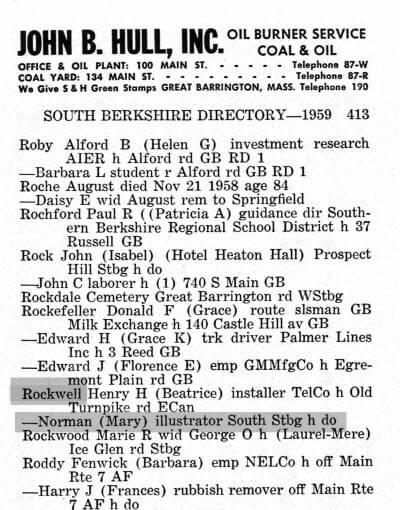
Beloved illustrator Norman Rockwell in a city directory. (Massachusetts Berkshire 1959 Berkshire, Massachusetts, City Directory, 1959)
2. Stock Up on Items that are Easy to Reach
While your subscription is active, stock up on easy to find items.
One way to do that is with Ancestry’s hints. Ancestry’s hinting system taps the most popular Ancestry collections (about the top 10% of the most popular collections). Watch your Ancestry tree for hints and check them all. When you first log in, note whether anyone new has taken an interest in your tree (if it’s public)–and see if they are relatives worth contacting.
3. Watch for New Products!
We’ve written about Ancestry updates that have stopped us in our tracks, like the recent U.S. Wills and Probates and Social Security Applications and Claims databases and the AncestryDNA Common Matches Tool.
We also update you regularly on new records collections that go online throughout the genealogy world: Ancestry databases are often among them.
You can also sort by “Date Added” in Ancestry.com Card Catalog. This is a great way to see the collections most recently added. Look for the green “NEW” tag.
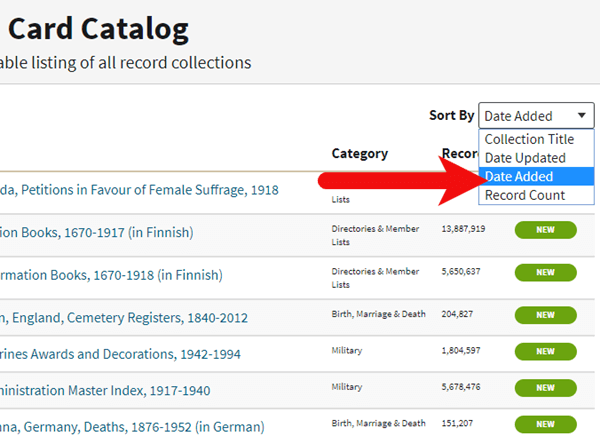
4. Avoid the Parts of the Experience that are Frustrating
Those who hate battling lines avoid big stores on peak shopping days and during the after-work rush. I avoid returning things at certain stores because their customer service desk is not worth the hassle.
Similarly, if the way Ancestry handles photos, sources, or Life Story timelines drives you nuts, ignore as much as you can except for your direct ancestors and closest relatives.
Perhaps you simply download each record you find and work with photos and timelines on your family history software (Lisa recommends RootsMagic–click here to read why). Or use Evernote’s newly updated web clipper (you can even make notes on top of your screen captures!) and store all your sources there.
Resources
Want to learn more about how to get the most out of Ancestry? Here are two additional resources:
Genealogy Gems Premium Podcast Episode 125: Using Ancestry Library Edition and other tips from a public library genealogist (available to Genealogy Gems Premium members only)
3 Things This Gems Follower Loves About the New Ancestry Site
by Lisa Cooke | Dec 21, 2016 | 01 What's New, DNA, MyHeritage |
MyHeritage DNA is new on the scene of genetic genealogy. With the recent launch of their DNA Matching, I decided to give it a test drive for you. I have now uploaded my test results from another company. Follow along as I share what I like about the MyHeritage DNA site…maybe it is just what you’ve been looking for!
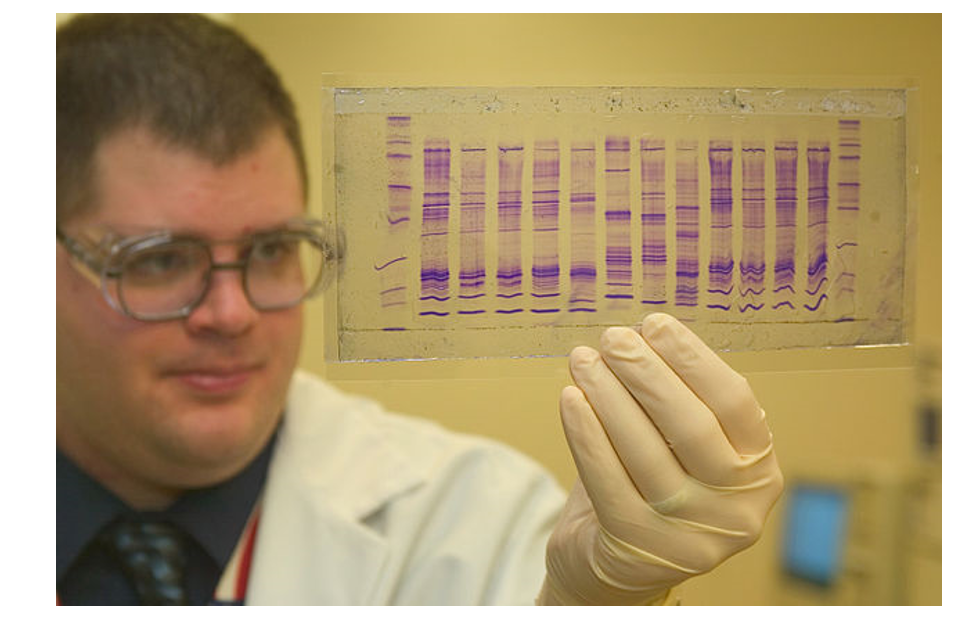
By James Tourtellotte, photo editor of CBP Today[1] [Public domain], via Wikimedia Commons.
In September, MyHeritage began to provide matching results for individuals who had uploaded their test results from another company to their site. As of today, uploading your DNA test results to MyHeritage DNA is still free, so if you have been thinking about it, you may want to take advantage sooner rather than later. As expected, the matches are only as good as the depth of the database, and it is early in the game. Their DNA database is small, but even now we can get an idea of what to expect from MyHeritage as they take their first steps into genetic genealogy.
One of the most exciting elements of their November 7, 2016 announcement is their development of a Founder Population project where they have hand-picked individuals to represent their reference population for calculating ethnicity. They plan to launch with 25 population groups, but will likely increase to 100 in a fairly short amount of time. This is a far more advanced ethnicity report than is currently offered anywhere else.
Transferring Your DNA Results to MyHeritage DNA
After you have figured out how to download your raw data from your testing company (see my instructions here: http://www.yourdnaguide.com/transferring), and add it to MyHeritage (you have to add a family tree to MyHeritage to do this), you will need to wait the requisite time to process. Then, you will receive an email notice that you have new DNA matches:
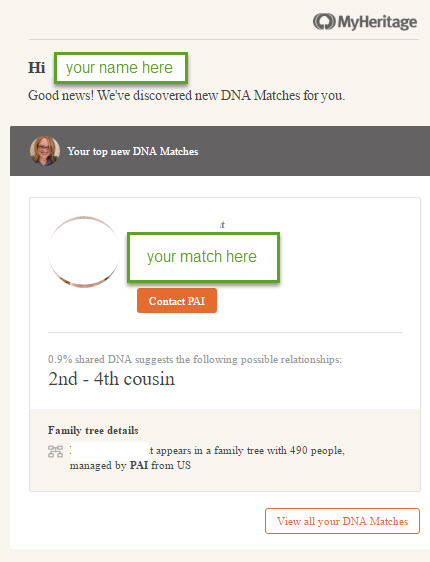
Email notice from MyHeritage regarding DNA matches.
You can access DNA matches when you log on to the site: under Discoveries, click DNA Matches (as shown below).

My Favorite Features of MyHeritage DNA
As for my favorite features, I like how they list all the possible relationships that make sense between you and your match, taking into account multiple factors like your age, gender, and your genetics instead of a simple, generic range like 2nd-4th buy chlamydia medication uk cousins. The accompanying chart, which visually shows you all possible relationships, is also very helpful. You can access the chart by clicking on the little question mark icon next to the relationship suggestions.
I like that these suggestions remind us that our genetic relationships have different genealogical interpretations. Meaning that genetically, a 2nd-cousin-once-removed, a first-cousin-twice-removed, and a second-cousin, all fall within a similar genetic range and it is impossible to determine your exact relationship based on the genetics alone.
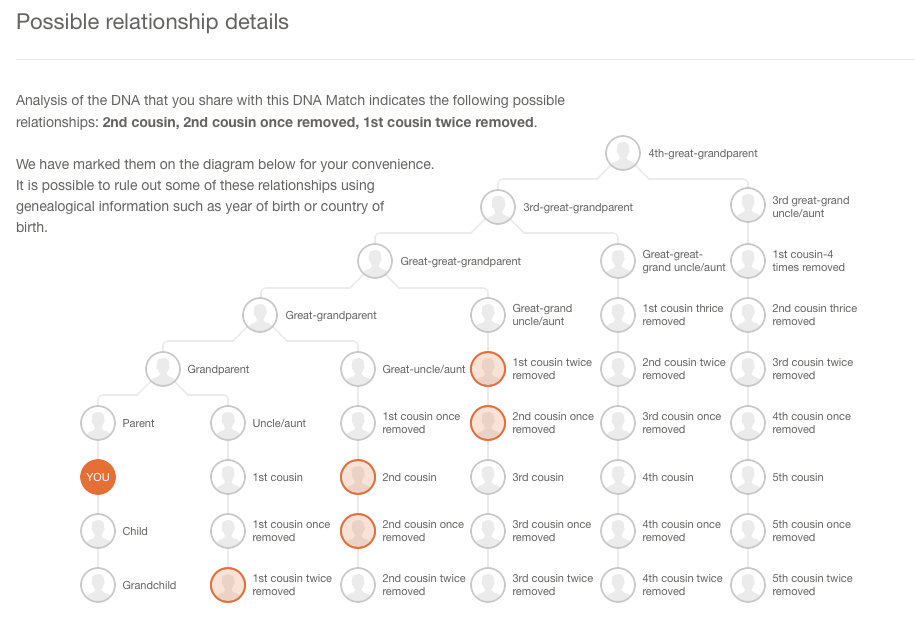
I also like how MyHeritage offers all three genetic descriptors of your relationship:
- total amount of shared DNA
- how many segments are shared
- the size of the longest piece of shared DNA.
While this is more of an intermediate to advanced piece to your results, it can be important as your relationship analysis becomes more involved.
Addressing a Concern of Genetic Genealogists
MyHeritage makes a unique claim in their press release about their matching feature addressing a main concern genetic genealogists have: the lack of pedigree information provided by their matches. MyHeritage claims that 95% of their DNA samples have pedigrees attached. That is remarkable! However, from my own quick calculation of my matches, the number with pedigrees is more like 60%.
They also indicated that they will soon be doing a bit of pedigree-analysis for you by providing a list of shared surnames and locations between you and your match. This will be based on the pedigrees you have both submitted and will certainly be a welcome addition.
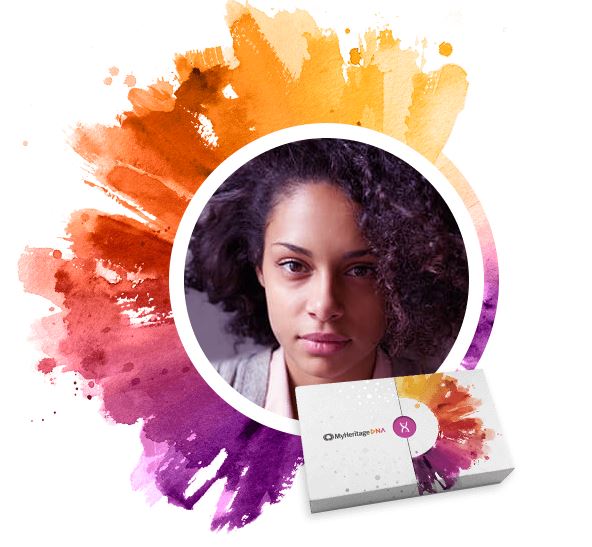 According to their November 9th Q and A, MyHeritage hasn’t decided yet if the ethnicity features will be available to those who only transfer, and they hint at many more features they have in the works that may only be offered to those who purchase their test.
According to their November 9th Q and A, MyHeritage hasn’t decided yet if the ethnicity features will be available to those who only transfer, and they hint at many more features they have in the works that may only be offered to those who purchase their test.
In short, the MyHeritage DNA site is currently functioning much like the top three genetic genealogy sites (Ancestry, Family Tree DNA, and 23andMe) and like the free tool Gedmatch: it offers a meeting place for those who have been tested at one company to meet those who have tested at another.
by Lisa Cooke | Apr 24, 2017 | 01 What's New, DNA |
The Family Tree DNA ethnicity report has been updated, and this means more details about ethnic and geographic origins for both autosomal and mtDNA DNA testers.
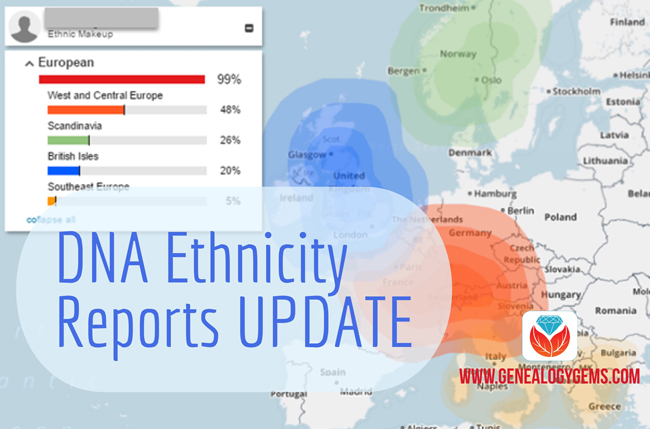
Family Tree DNA recently announced a round of updates to myOrigins, its mapping tool for ethnic and geographic ancestry. New are more detailed breakdowns of their population clusters and in-depth descriptions of them. (Visit Family Tree DNA’s website here.)
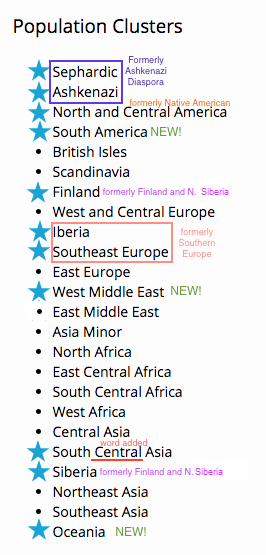
It is so exciting to see new or updated reports from our genetic genealogy testing companies! It is a good reminder of two things: First, that the results we currently have, especially in the arena of our ethnicity results, will continually be improving. Second, that once you test with any company, these improvements are added to your account and your results are updated automatically.
Family Tree DNA is the only company offering a complete look at your mitochondrial DNA (mtDNA), the one that traces your direct maternal line. They recently updated the deep ancestral assignments for these mtDNA tests. The updates were based on scientific advances in the world of mtDNA and can sometimes give you a more specific idea of where your ancestral line came from.
In addition to the mtDNA updates, FTDNA has also updated their MyOrigins results as part of your autosomal DNA test. Previously your MyOrigins results broke up the world into 18 different pieces and you were told your affiliation with each. Now with 6 new populations added, there are a total of 24. The changes include splitting three categories into smaller parts, like they are now reporting Finland separate from Siberia, as well as adding three new categories in South America, West Middle East, and Oceania.
Your MyOrigins results will now also include trace amounts, which are those percentages that are very low and therefore do not carry a high confidence. But many genetic genealogists wanted to see any area that may have been detected, and so FTDNA responded.
How to Review Your Family Tree DNA Ethnicity Report
1. Log in to your Family Tree DNA account. From your dashboard, select myOrigins.
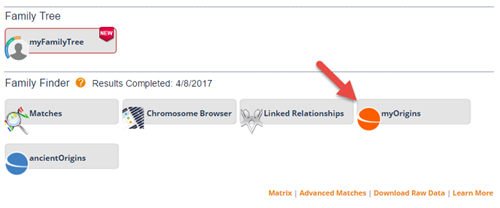
2. On the myOrigins page, click View all to see your full ethnic percentages, as defined by Family Tree DNA. You can also click View myOrigins map to see your results mapped out. (The map looks like the one at the beginning of this post.)

3. When you click to view all your ethnicity results, you’ll see a more detailed breakdown of your population groups. Click View all population descriptions to read more about each one.
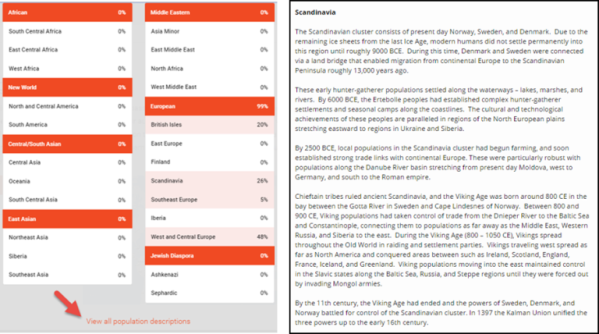
The Impact of Updated Family Tree DNA Ethnicity Reports
On the whole, are these updated results going to significantly impact your family history research if you have tested at Family Tree DNA? Likely not. The greater impact is just in the idea that these things can be improved, updated, and changed, which means our experience will continue to improve, and more people are likely to test. More people in the database means more possible cousins. More possible cousins means more genealogy breakthroughs, and a more complete picture of our heritage, and that is what we are really all after.
Learn More About DNA Testing for Genealogy
Click here to see individual guides for topics I talked about above, such as testing at Family Tree DNA, testing your autosomal or mitochondrial DNA and getting started (in which I explain ethnicity results). Or click here for the ultimate Genetic Genealogy Jumbo Pack: ALL 10 of my guides PLUS my video class, “Getting Started with Genetic Genealogy.”

by Lisa Cooke | Aug 20, 2016 | 01 What's New, DNA, Societies |

The Daughters of the American Revolution (DAR) accepts limited DNA evidence to prove descent from a Revolutionary War veteran. In my opinion, the DAR DNA policy is a little too limited. Here’s why–and what you can do.
Membership to the Daughters of the American Revolution (DAR) has been a holy grail for U.S. genealogists for 125 years. With its requirement of proof of a “lineal bloodline descendant from an ancestor who aided in achieving American independence” in three categories: birth, marriage, and death, as well as proof of Revolutionary War Service, membership is exclusive to those with an iron-clad paper trail.
That is, until 2014, when the DAR added DNA evidence to its list of acceptable documents proving a relationship to a Revolutionary War ancestor.
What does the DAR DNA Policy Accept?
The DAR only accepts one of the three forms of DNA testing which is the Y chromosome test, or YDNA. The YDNA traces only a direct paternal line, making it a great choice when trying to link living males with their Revolutionary counterparts. This YDNA is basically passed unchanged from generation to generation, making the modern day holder of the YDNA the proud owner of possibly exactly the same YDNA that fought the Redcoats. That’s pretty cool, don’t you think?
The DAR recently announced that to further help those wanting to use their YDNA as part of their application, they have formed a project at Family Tree DNA, the company that provides the YDNA testing. Projects are absolutely the best way to get the most out of your YDNA testing. There are surname projects, location projects, haplogroup (deep ancestral group) projects, and even special interest group projects, such as this one for the DAR.
While the results of the testing are only available to members of the group, the statistics page gives us an idea of the scope of this project. They currently have 1,242 total members and what looks to be about 430 YDNA tests completed (though it is admittedly difficult to tell based on the chart online.) This means if you think your paternal line may be a candidate for the DAR, you can have a representative of your line tested and compared to the group. If you find a match, you will have relative certainty that you do connect to that Patriot, and can then be more confident in your traditional research in pursuit of the necessary paper connections.
In April the DAR opened up project membership to include mtDNA and autosomal DNA. They will not be using these two kinds of DNA in their applications (yet), but hopefully this project will pave the way for the addition of those tests in the future (though, for several reasons, inclusion of these tests in the application process will be more difficult.)
Though, in all honesty, they have made the YDNA process difficult enough. Let’s say that you are actually able to trace down multiple generations to find a direct male descendant of your Revolutionary guy to be tested, an individual who is, the DAR mandates, “sharing your maiden name or your mother’s maiden name,” and you convince that unassuming relative to give up his saliva, you still are only half way there. The DAR guidelines also state that you have to have a second individual who is “a descendant of the same Revolutionary War ancestor through a different unbroken male lineage that has been previously proven on a DAR application…” (I added the emphasis here.)
A Practical Example of the DAR DNA Policy
OK, so let’s say you are a genealogical whiz and, let’s face it, you were lucky, and you find two such candidates and have them tested.
Well, the DAR tells us that those two men must match EXACTLY on the 37 YDNA markers tested. Now there is no telling when that YDNA might experience a mutation. So to me it seems a little unfair to require perfection. So it is possible, that even after all the work of finding the right guys to be tested, the test itself may work against you, as even one difference is enough to keep this YDNA off of your application, at least for now.
So while I applaud the DAR for using YDNA testing at all, and for spearheading a special interest project at Family Tree DNA, the reality is that the limitations of direct paternal line genealogy and the requirements of testing make it unlikely that very many will be able to take advantage of the YDNA in their DAR applications.
However, there are a few things you can take away from this article now:
- First, collect those DNA samples whenever you can, especially for key relatives, like your paternal line and the oldest living generation (whose DNA is less likely to have experienced any mutation.)
- Second, keep your research paper trail strong. Nothing in the near future of the genetic genealogy industry tells us that distant relative connections (like to your Revolutionary War ancestor) will be provable by DNA alone.
- And third, definitely look at crowd-sourced studies for your particular DNA. Those surname, location, haplogroup, and special interest group projects I mentioned from FTDNA are just some of the ones that might help your research—or that you could use to help someone else’s. I’ve talked about these studies before: click here to read about them.
My Complete DNA for Genealogy Research Guide Series
I am Diahan Southard, Your DNA Guide, and the author of a series of genetic genealogy quick guides. My guide called Y Chromosome DNA for the Genealogist is the perfect tool to help guide you through the testing and analysis process. Click here to learn more about this guide and here for all of my guides, or click here to learn more about my series of how-to videos, also available to Gems fans for a special price.
Thanks for sharing this post with your genealogy friends who do DNA research (especially those who may have Revolutionary War ancestors!)
by Lisa Cooke | Aug 1, 2016 | 01 What's New, DNA
“Are unassigned DNA test kits interchangeable? Does Diahan Southard do one-on-one DNA consultations for genealogy?” A listener asks, and we have the answers.
Simona recently wrote in with compliments and two questions for Diahan Southard. Here’s the Q&A, on more resources from Diahan AND whether DNA test kits from Family Tree DNA are interchangeable if they haven’t been use:
Q: “No one, I mean NO one makes DNA easier and more interesting than…your DNA expert Diahan does! I am curious as to what Diahan charges for phone or email consults regarding who to test for what.”
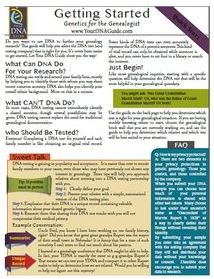 A: Yes, I agree, Diahan Southard, Your DNA Guide and the resident Genealogy Gems genetics expert, is amazing! Diahan answers a lot of those initial question about who to test for what in her handy Getting Started: Genetics for the Genealogist Quick Guide (click to view/purchase). It’s very affordable and can give you inexpensive answers without needing to pay for one-on-one consultation.
A: Yes, I agree, Diahan Southard, Your DNA Guide and the resident Genealogy Gems genetics expert, is amazing! Diahan answers a lot of those initial question about who to test for what in her handy Getting Started: Genetics for the Genealogist Quick Guide (click to view/purchase). It’s very affordable and can give you inexpensive answers without needing to pay for one-on-one consultation.
That said, Diahan does offer DNA consultation services. She also teaches a series of how-to videos that’s, again, much more affordable than a consultation (and much more affordable than taking the wrong test or staring at your results afterward with NO idea what to do with them next). Like Simona says, Diahan demystifies DNA like no else does, and these video tutorials are no exception.
Genealogy Gems listeners get a discount on her video series. A year’s access to is regularly $39.95, but Gems listeners can click on a special link to get it for just $24.95. Click here to learn more.
Q: “I have 5 FamilyTree DNA kits on the counter. Are they all the same kits in the raw? I intended them for a Mtdna test, a Y test and 3 autosomal tests for various family folk. Can I switch tests and persons at this stage?”
A: Diahan says: “Yes, the Family Tree DNA kits she has can be used for any test, provided you correlate everything with the customer service team at FTDNA and get all the kit numbers changed to the appropriate tests.
Diahan Southard is definitely a valuable “GEM” here at Genealogy Gems. Whether you’re just starting to learn about DNA testing for genealogy research, or you’re trying to get the most out of your results, click here to read tons of free DNA how-tos and advice from Diahan. And thanks for sharing this post with your friends and genealogy buddies!This is so, so important as I know of too many women who have mistakenly used their husband’s YDNA kit number and had their sample run, which won’t produce any results. But FTDNA still ran the test, which means you still pay for it. So be EXTRA careful to make sure you have all of your ducks in a row.”

















